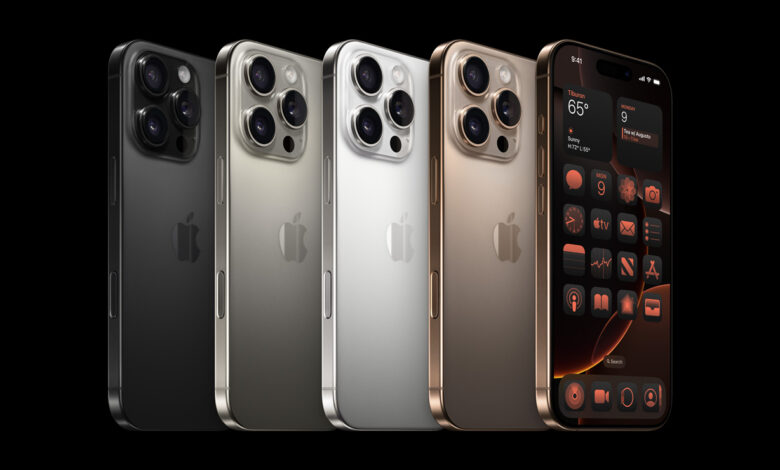iPhone 16: What to Expect From Apple’s Next Generation Smartphone

Apple continues to push the boundaries of technology with every new release of its iconic iPhone. While the iPhone 15 has only recently hit the market, speculation is already swirling about what the iPhone 16 will bring to the table. With Apple’s consistent track record of innovation, the iPhone 16 is shaping up to be a monumental upgrade. In this article, we will explore potential features, design changes, technical specifications, and software improvements that might be included in the iPhone 16.
Design and Build Quality
Apple’s iPhone designs have evolved significantly over the years, balancing sleek aesthetics with functional durability. The iPhone 16 is expected to continue this trend, potentially featuring a refined version of the flat-edge design seen in recent models like the iPhone 12 through iPhone 15. However, rumors suggest that the iPhone 16 might introduce a new, more durable material for its frame, possibly moving beyond stainless steel and aluminum to a titanium or ceramic-based alloy. This change could result in a lighter, more durable phone that feels premium in the hand.
In terms of size, the iPhone 16 lineup will likely continue to offer multiple models: a standard iPhone 16, a larger iPhone 16 Plus, and the high-end iPhone 16 Pro and Pro Max versions. However, some reports indicate that Apple may experiment with a slightly larger screen size across the board. The increase in screen size could be facilitated by further reducing the bezel, creating a more immersive, edge-to-edge display experience.
The camera layout on the rear may also see a reconfiguration. The iPhone 16 could adopt a more streamlined camera bump or even introduce flush-mounted lenses that sit level with the phone’s back surface. This would be a welcomed change for users who find the current protruding camera modules to be cumbersome or prone to damage.
Display Enhancements
The display is one of the most critical aspects of the iPhone experience. For the iPhone 16, Apple is rumored to be focusing on improving both the quality and functionality of the display. While current iPhones already boast impressive Super Retina XDR OLED screens, the iPhone 16 might introduce a new iteration of this technology, possibly branded as “ProMotion XDR.”
This new display could feature an adaptive refresh rate of up to 144Hz, surpassing the 120Hz found in the iPhone 15 Pro models. A higher refresh rate provides smoother animations and more responsive touch controls, which will be especially beneficial for gamers and users who consume a lot of video content.
Apple is also likely to enhance its always-on display feature, possibly allowing for more customization and additional widgets. The iPhone 16’s screen could support a higher peak brightness than previous models, improving outdoor visibility and HDR content playback. Furthermore, rumors suggest the possibility of an under-display Face ID system, which would eliminate the notch entirely and offer a truly uninterrupted display.
Camera System Upgrades
The camera system is often one of the most anticipated features in new iPhones, and the iPhone 16 is expected to make significant strides in this area. Building on the success of the iPhone 15’s improved sensors and computational photography, the iPhone 16 may feature a groundbreaking periscope zoom lens on both the Pro and non-Pro models. This would allow for optical zoom capabilities of up to 10x without sacrificing image quality, a substantial improvement over the current 3x optical zoom in the iPhone 15 Pro Max.
Apple’s emphasis on computational photography will likely continue, with the iPhone 16 utilizing an advanced image signal processor (ISP) powered by the next-generation A18 chip. This could result in even more impressive low-light photography, faster autofocus, and enhanced image stabilization. Additionally, the rumored 48-megapixel main sensor from the iPhone 15 Pro might become standard across all iPhone 16 models, offering users higher resolution images and more flexibility in post-processing.
The iPhone 16’s front-facing camera is also expected to receive an upgrade. Features like improved low-light performance, higher resolution sensors, and possibly even under-display camera technology could make their way into the new model, allowing for a more seamless and immersive display experience.
Performance: The A18 Chip and Beyond
One of the defining features of every new iPhone is its chipset. The iPhone 16 is expected to be powered by Apple’s new A18 Bionic chip. Built on an even more advanced fabrication process—likely a 3nm or 2nm process—the A18 promises to offer significant gains in both performance and power efficiency.
The A18 Bionic is rumored to feature an improved CPU and GPU architecture, with a focus on machine learning and artificial intelligence tasks. This would enable the iPhone 16 to handle more complex computational photography, augmented reality applications, and machine learning algorithms with ease. For gaming enthusiasts, the enhanced GPU could bring console-quality graphics to the iPhone, making it a powerhouse for mobile gaming.
In addition to raw power, the A18 chip will likely contribute to better battery life. A more energy-efficient chip, combined with optimized iOS software, could extend the iPhone 16’s battery life, even with the rumored 144Hz display. Fast charging and improved MagSafe wireless charging speeds are also expected to be part of the package.
Storage and Memory Options
Apple tends to increase storage options with each new generation of iPhones. The iPhone 16 is anticipated to offer storage capacities starting from 256GB for the base model, potentially going up to an unprecedented 2TB for the Pro models. With the growing file sizes of photos, videos, and apps, these expanded storage options would be a logical step to accommodate users’ needs.
In terms of RAM, the iPhone 16 Pro models could see an upgrade to 10GB or even 12GB of LPDDR5 RAM. This would allow for more efficient multitasking and enhanced performance in demanding applications such as video editing and gaming. Non-Pro models are expected to receive a more modest RAM upgrade, likely in the 8GB range.
Connectivity: 5G, Wi-Fi 7, and Beyond
The iPhone 16 will likely support the latest advancements in connectivity. While 5G capabilities are already present in current models, the iPhone 16 might include support for the upcoming 5G Advanced networks, offering even faster data speeds and improved network reliability.
Wi-Fi 7, the next generation of Wi-Fi technology, is also expected to be featured in the iPhone 16. This would provide faster wireless internet speeds, lower latency, and enhanced performance in crowded areas. Bluetooth 5.3 or higher is anticipated as well, allowing for better connectivity with accessories like AirPods, Apple Watch, and other smart devices.
Software: iOS 18 Features
The iPhone 16 will debut with iOS 18, which is expected to bring several new features and improvements. Apple will likely continue to focus on privacy and security enhancements, offering users more control over their data. We might see new ways to interact with widgets, more customization options for the home screen, and advancements in augmented reality experiences using Apple’s ARKit.
A rumored feature is a more advanced Siri, leveraging the A18 chip’s AI capabilities to provide more contextual, proactive assistance. Additionally, iOS 18 could introduce more seamless integration between the iPhone, iPad, Mac, and Apple Watch, reinforcing Apple’s ecosystem.
Battery Life and Charging
Battery life is always a crucial consideration, and the iPhone 16 is expected to offer improvements in this area. The combination of a more power-efficient A18 chip and iOS 18’s software optimizations could result in longer battery life, even with a high-refresh-rate display.
Apple might also introduce faster wired and wireless charging options. The iPhone 16 is rumored to support up to 35W wired charging and faster MagSafe wireless charging, potentially reducing charging times significantly.
Potential Pricing and Release Date
Apple typically releases new iPhones in September, so the iPhone 16 is expected to follow this schedule with a launch in September 2025. Pricing will likely align with the current iPhone 15 lineup, though any significant new technology or features could result in a slight price increase.
The base model iPhone 16 might start around $899, with the iPhone 16 Pro and Pro Max models potentially ranging from $1,099 to $1,599, depending on storage configurations.
Conclusion
While it’s still early to predict every detail, the iPhone 16 promises to be an exciting release that continues Apple’s legacy of innovation. From potential design changes and display enhancements to camera upgrades and performance improvements with the A18 chip, the iPhone 16 is set to offer a comprehensive set of features catering to a wide range of users. As we edge closer to its anticipated release, the iPhone 16 is undoubtedly shaping up to be one of the most advanced smartphones on the market.





